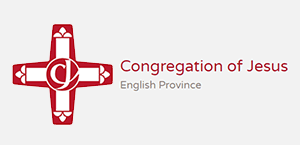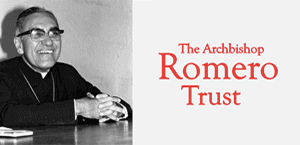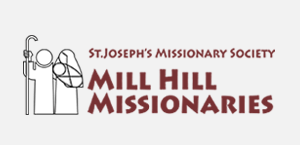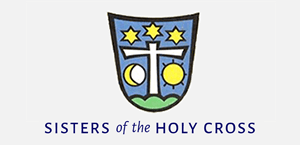Gospel in Art: Easter Wednesday - The Supper at Emmaus

Friend of the Humble (Supper at Emmaus), by L'Hermitte © Museum of Fine Arts, Boston
Source: Christian Art
Gospel of 3 April 2024
Luke 24:13-35
Two of the disciples of Jesus were on their way to a village called Emmaus, seven miles from Jerusalem, and they were talking together about all that had happened. Now as they talked this over, Jesus himself came up and walked by their side; but something prevented them from recognising him. He said to them, 'What matters are you discussing as you walk along?' They stopped short, their faces downcast.
Then one of them, called Cleopas, answered him, 'You must be the only person staying in Jerusalem who does not know the things that have been happening there these last few days.' 'What things?' he asked. 'All about Jesus of Nazareth' they answered 'who proved he was a great prophet by the things he said and did in the sight of God and of the whole people; and how our chief priests and our leaders handed him over to be sentenced to death, and had him crucified. Our own hope had been that he would be the one to set Israel free. And this is not all: two whole days have gone by since it all happened; and some women from our group have astounded us: they went to the tomb in the early morning, and when they did not find the body, they came back to tell us they had seen a vision of angels who declared he was alive. Some of our friends went to the tomb and found everything exactly as the women had reported, but of him they saw nothing.'
Then he said to them, 'You foolish men! So slow to believe the full message of the prophets! Was it not ordained that the Christ should suffer and so enter into his glory?' Then, starting with Moses and going through all the prophets, he explained to them the passages throughout the scriptures that were about himself.
When they drew near to the village to which they were going, he made as if to go on; but they pressed him to stay with them. 'It is nearly evening' they said 'and the day is almost over.' So he went in to stay with them. Now while he was with them at table, he took the bread and said the blessing; then he broke it and handed it to them. And their eyes were opened and they recognised him; but he had vanished from their sight. Then they said to each other, 'Did not our hearts burn within us as he talked to us on the road and explained the scriptures to us?'
They set out that instant and returned to Jerusalem. There they found the Eleven assembled together with their companions, who said to them, 'Yes, it is true. The Lord has risen and has appeared to Simon.' Then they told their story of what had happened on the road and how they had recognised him at the breaking of bread.
Reflection on the painting
Our painting combines today's Gospel story, where Jesus is breaking bread and the onlookers suddenly recognise him, with portraying Jesus as Friend of the Humble, the title of our painting. I do think this is a beautiful, gentle, gripping painting. Three generations of a family are depicted, sharing a meal. Before Léon-Augustin L'Hermitte painted this canvas it would be fair to say that artists always tried to represent Jesus as majestic, full of glory and maybe somewhat distant from normal day-to-day life. Our artist masterfully places Jesus in a contemporary setting of 1892, when this was painted. The painting emphasises that Jesus became human and that he did walk among us.
Vincent van Gogh was one of L'Hermitte's greatest admirers. In one of his letters he wrote: "If every month Le Monde Illustré published one of his compositions... it would be a great pleasure for me to be able to follow it. It is certain that for years I have not seen anything as beautiful as this scene by L'Hermitte... I am too preoccupied by L'Hermitte this evening to be able to talk of other things." Quite the accolade to have Van Gogh write about one's artistry this way.
As the risen Lord approached the two disciples, his first act was to draw them into conversation, asking them to share the nature of their discussion. He sought to hear their tale; a tale filled with sorrow and loss. He wanted to fully engage with them in their moment of grief. He accepted them as they were, demonstrating a profound respect for their current state on their spiritual journey. This is precisely how the Lord presents himself to us: he encounters us in our present circumstances, encouraging us to open our hearts to him, to express our deepest thoughts and feelings. It was only after attentively hearing the disciples' lament that the unrecognized visitor responded. His words cast their despairing narrative in an entirely new light. He made sense of their grief, by placing it in the greater narrative of God's plan - a narrative not concluded by death, but crowned with light and triumph.
LINKS
Gospel in Art: https://christian.art/
Today's Reflection: https://christian.art/daily-gospel-reading/luke-24-13-35-2024/
Competition: The Laudamus Award 2024 for Sacred Art - www.indcatholicnews.com/news/49310



![Engraving by Lucas Cranach the Elder, From The Martyrdom of the Twelve Apostles [Holl. 53-64], © National Gallery of Art, Washington](https://cdn.indcatholicnews.com/articles/174717576698xBGJDXgWR7uKOpn0yf3QoY16sICb.png?width=330&aspect_ratio=3:2)














